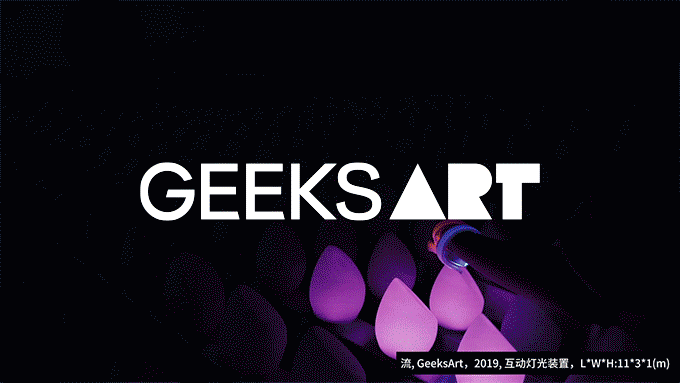01
历史文脉 Historical Context
建筑外观 Architectural Exterior
位于西安市雁塔区的曲江遗址公园,历史上以唐代的“曲江流饮”最负盛名,每有新科进士及第,都会在曲江池宴会上诗酒文章,文人雅士无不流连于此。一池曲水、几处楼台,诉说着曲江遗址公园片区独特的历史文脉。
Located in the Qujiang Heritage Park of Xi’an’s Yanta District, this area was historically renowned for the Tang Dynasty tradition of “Qujiang Liuyin” (Floating Wine Cups on the Winding River). Newly appointed scholars would gather here for poetic and literary banquets by the Qujiang Pool, making it a favored retreat for literati. The winding waters and scattered pavilions speak to the site’s unique historical legacy.
2008年,西安市以“恢复山水人文格局”为目标,通过疏浚水域、重现植被,恢复性再造曲江流饮、汉武泉、凤凰池等历史文化景观,形成了1500余亩的城市生态景观公园,即如今西安人口中的南湖公园。改造后的南湖公园,不仅是外地游客游览西安的景点,也是周边居民散步、晨跑的好去处。
In 2008, Xi’an embarked on a mission to “restore the landscape and cultural heritage.” Through dredging the waters and reviving vegetation, historical scenes like Qujiang Liuyin, Hanwu Spring, and Phoenix Pool were recreated, forming a 1,500-acre urban ecological park—now known locally as Nanhu Park. The revitalized park has since become both a tourist attraction and a beloved spot for locals to stroll and jog.
02
场地信息 Site Information
由郭莘空间设计工作室担任建筑改造与室内设计的UNICO咖啡馆,坐落于南湖公园的西南角,项目完工落地后,迅速成为南湖公园中的热门打卡地,如今,南湖UNICO咖啡馆已经投入运营一年多,一天的各个时段,均有着很高的人流量。
The UNICO café, redesigned by GUOXIN SPACE DESIGN, sits at the southwestern corner of Nanhu Park. Since its completion, it has quickly become a popular destination. Now operational for over a year, the café attracts steady crowds throughout the day.
项目原本是一家咖啡馆,属于公园中比较常见的玻璃盒子建筑,处于公园西侧斜向运动跑道与内部步行道的西南夹角区域,除了临路的两侧视野,建筑一侧面向栽种柳树的草地缓坡,另外一侧,则可以看见缓缓流淌的曲江池水。
Originally a generic glass-box café, the structure occupied a wedge-shaped plot between a diagonal jogging path and a pedestrian walkway. While two sides faced the paths, the others overlooked a grassy slope planted with willows and the gently flowing Qujiang waters.
项目原始照片 Original Site Photos
通过场地勘查,我们发现,原有建筑空间主要存在两个问题:一,面向跑道一侧的楼梯阻隔了人与空间的交互性,二,站在室内,窗外栽种柳林的草坡景色,被原咖啡厅的厨房部分遮挡。解决这两个问题的同时,如何用朴素自然的语言去处理建筑与四面风景的关系,并完成建筑整体、以及室内外一体化的表达,是UNICO项目的核心设计理念。
Through site analysis, we identified two key issues in the original architectural space: first, the staircase facing the running track hindered the interaction between people and the space; second, when standing indoors, the view of the grassy slope with willow trees outside the window was partially blocked by the original café’s kitchen.
Addressing these issues while exploring how to use a simple and natural design language to harmonize the building with its surrounding landscapes on all four sides, and to achieve a holistic architectural expression that integrates interior and exterior spaces, formed the core design concept of the UNICO project.
原始区位图 Original Site Location Plan
改造后的区位示意图 Renovated Site Location Diagram
场地原始建筑结构 As-Built Structural Conditions
改造后的建筑结构 Post-Renovation Structural Scheme
03
与柳林草坡的互动 Dialogue with the Willow Slope
初次来到场地,最吸引设计团队的,便是窗外这一片栽种柳林的草坡。我们邀请朋友来到场地,找一个自己最喜欢的位置坐下,结果大家不约而同的选择坐在面向草坡的窗前,于是,留一扇窗,成为整个设计思考的原点。
On our first visit, the willow-covered slope captivated us. When we invited friends to pick their favorite spot, they unanimously chose seats by the slope-facing window. Thus, “leaving a window open” became the design’s starting point.
原本位于这一侧的厨房被拆除,18米长横窗外的景色得以完全释放:草坡没有行人踪迹,十分静谧,阳光洒在蜿蜒的草坡上,宛如一幅油画;而当微风吹过,柳条轻荡,鸟儿飞落,又呈现出一幅动态景观。
We removed the kitchen on this side, unveiling an 18-meter-long horizontal window framing the serene slope—untouched by footprints, bathed in sunlight like a painting, and animated by swaying willows and birds.
横窗外景色 View Through the Horizontal Window
窗前的座位 Seating by the Window
面向景色的窗台调整成适宜就坐的高度和尺度,摆放一些软垫,人们在这里,窗外风景如画,就有了“清风拂绿柳,人在画中游”的几分意境。
The sill was adjusted to seating height with cushions, creating a poetic vignette where visitors feel “caressed by the breeze amid green willows, as if wandering through a painting.”
站在草地望向横窗一侧 View from the Grass Toward the Window
04
与橡胶跑道的互动 Engagement with the Jogging Path
紧邻跑道的一侧 Adjacent to the Running Path
基于“轻改造、弱介入”的改造原则,设计保留了原本钢构与玻璃组成的建筑框架。项目基地与公园橡胶跑道仅有数米之隔,时常有晨跑运动的人们来往经过,意味着比邻跑道的建筑立面,有着很强的互动基因,
Guided by the principle of “minimal intervention and light touch renovation,” the design preserves the original steel-and-glass structural framework. The site sits merely meters away from the park’s rubberized running track, where morning joggers frequently pass by. This proximity imbues the building facade adjacent to the track with inherent potential for dynamic interaction.
我们拆除了原本位于这一侧的楼梯,通过折叠窗、内外摆放座椅的形式,加强空间与外部的链接,混凝土局部浇筑的门头,则强化了入口标识,引导人们视线的落位与自然走入。
The original staircase on this side was removed to enhance spatial connectivity with the exterior. This was achieved through the installation of folding windows and strategically placed indoor-outdoor seating. A partially cast-in-place concrete portal was introduced to accentuate the entrance identity, naturally guiding visual focus and pedestrian flow into the space.
门的顶部做了斜面处理,压低高度,增加安全感 The door header features a sloped profile that lowers the overhead clearance, creating a more intimate and secure entry experience.
户外座位 Outdoor Seating Area
室内临窗座位 Window-Side Seating
在室内看向跑道 View to the Running Track from Interior
05
与人行步道的互动 Interaction with the Pedestrian Walkway
与人行道相邻的界面 The Walkway-Adjacent Interface
位于步行路这一侧的建筑立面,是人们通往、游玩公园大多会注意到的第一立面,对这一界面的功能定位有两点,一个是昭示性,另一个是公共性。
This primary elevation along the footpath serves as visitors’ first architectural impression when entering the park. Its design addresses two essential functions: landmark presence and public accessibility.
在这个界面,我们选择混凝土浇筑的方式做了局部围挡,混凝土片墙的上部做了手凿处理,产生肌理的变化。之所以选择混凝土,是因为项目周边存在着大量具有年代感的石柱础、拴马桩,不远处的白石桥亦呈现在眼前,我们希望改造后的建筑能够融入这个绿意盎然又历史悠久的遗址公园中,没有显性色彩和质地的混凝土再合适不过。
For this critical interface, we employed cast-in-place concrete partitions with hand-textured upper sections to create tactile variations. The material choice consciously responds to the site’s heritage context – weathered stone plinths, historic hitching posts, and the nearby white stone bridge all informed this decision. The raw concrete’s muted tones and non-reflective surface allow the architecture to harmoniously blend into this lush, historically significant park landscape, achieving contextual continuity through material restraint.
地台也改为用混凝土浇灌,统一的视觉语言 The platform was also reconstructed using cast-in-place concrete, establishing a unified visual language throughout.
混凝土的手凿肌理 Hand-Chiseled Concrete Texture
不锈钢与U型玻璃展示面,内部安装了灯带条 Stainless Steel and U-Glass Display Surface with Integrated LED Strip Lighting
承接混凝土片墙,使用了一段不锈钢与U型玻璃材料作为局部展示面,轻盈现代感的质地与厚重的混凝土体块产生材质的碰撞,UNICO醒目的标识牌色彩浓烈,起到了吸引视线和展示品牌信息的作用。
Flowing from the concrete partition wall, a stainless steel and U-profile glass display section creates a deliberate material contrast—the lightweight, contemporary assembly juxtaposed against the massiveness of the concrete volume. The vibrant UNICO signage, strategically positioned, serves dual purposes: commanding visual attention while clearly communicating brand identity.
考虑到紧邻公园步道,我们延伸了建筑的挑檐,形成一段檐下走廊,摆放户外桌椅和休憩座位。这样一来,项目不仅是一个商业定位的咖啡馆,也有部分区域释放给公园和来往行人,增加了一层城市友好的公共性意义。
Recognizing the immediate adjacency to park walkways, we extended the building’s eaves to create a sheltered colonnade. This canopy space accommodates outdoor seating while performing urban-scale generosity – transforming what could have been a purely commercial café into a civic amenity that shares territory with park visitors.
檐下空间,遮挡的展示面也避免与室内的视线相对,增强私密感 The sheltered eaves area incorporates strategic screening elements that prevent direct sightlines into the interior, enhancing spatial privacy while maintaining visual connectivity with the surroundings.
休憩座位 Resting Seating Area
延伸的屋檐对原有树木做出避让,我们希望保留设计的善意,在这个公园中,建筑不再单纯地突出自我,甚至连一棵树的生长都不应被打扰。建筑可以在形态和功能上做出调整,但它始终应与自然保持一种和谐的共生关系。
The extended eaves consciously accommodate existing trees, embodying our design ethos of respectful coexistence. Within this park context, the architecture deliberately recedes from self-assertion – not even a single tree’s growth should be compromised. While adapting in form and function, the building maintains an essential harmonic symbiosis with nature throughout all design decisions.
延伸的屋檐对原有树木做出了避让 The extended eaves were carefully designed to preserve existing trees.
室内部分,依循建筑改造的脉络进行空间重塑,遮挡的界面对于空间功能划分起到指引,设计将操作台和卫生间置于遮挡面之后,而基于建筑空间的通透性,空间的设计只需释放窗外景色,使顾客在不同的用餐区域都有可远眺的景色。
The interior follows the architectural renovation’s logic, where strategic screening walls guide functional zoning. Service areas like the bar counter and restrooms are discreetly placed behind these partitions. Capitalizing on the building’s inherent transparency, the design simply frames the exterior views, ensuring every dining area offers curated vistas for patrons.
操作台位置 Service Counter Placement
操作台区域 Service Counter Zone
混凝土片墙延伸至室内 Concrete Wall Extending Indoors
06
与曲江池水的互动 Connection to Qujiang Waters
建筑面向曲江池水的界面,与池水有一定距离,临近有一条小径和灌木丛。对于这一界面,优势是视野开阔,且朝向东北,眼睛观看的舒适度更高,我们希望这里产生的状态是模糊的、包容的,建构的檐下空间,可观景、可休憩、可游走。
This northeast-facing side offers open views toward the pool, separated by a shrub-lined path. Seeking ambiguity and inclusivity, we designed a versatile eaves space for viewing, resting, or meandering.
基于檐下空间流动且模糊的状态,设计将建筑的这一界面完全打开,通过两扇折叠门,室内与廊下、外部环境实现联通,坐在室内也能感受到阳光与微风的轻拂。
Folding doors fully open this façade, merging indoors with the covered terrace. A lightweight stainless steel staircase, angled to create tension with the columns, asserts the building’s presence without intrusion.
临池水一侧的檐下空间 Waterside Canopy Space
折叠门开启状态 Folding Doors – Operational Status
在室内望向池水方向 View Toward the Waterfront from Interior
楼梯被放在了这一侧,不锈钢板搭建的楼梯,体量相对轻巧,斜向布局与建筑体、廊柱产生结构的张力,强调了建筑在公园中的存在感。
The staircase is strategically positioned on this elevation, where a lightweight stainless steel construction creates deliberate structural dynamism. Its angled trajectory generates a compelling tension with both the building mass and colonnades, asserting architectural presence within the park landscape.
楼梯位置 Staircase Location Strategy
灯光亮起后的建筑空间 Architectural Space Illuminated
07
结语 Epilogue
从“留一扇窗”的思考原点,到完成项目的落地,设计使人与建筑空间产生的互动有着丰富的多样性,感受亦不同。它处在南湖公园中,既有自己鲜明的特质,又与公园环境和谐共处。我们希望人们来到这里,都能找到自己喜欢的地方坐下,感受自然与时光交织的美好。
From the initial idea of “leaving a window open” to its realization, UNICO fosters diverse human interactions within its space. It stands out in Nanhu Park yet harmonizes with its environment. Here, visitors can find their preferred spot to savor the interplay of nature and time.
平面图:
技术图纸:
项目信息:
项目名称:unico
项目类型: 餐饮空间设计
项目地点: 陕西省西安市雁塔区曲江南湖公园
项目业主: 西安曲江旅阳餐饮管理有限公司
建筑面积: 300㎡
设计时间: 2023年6月- 7月
建设时间: 2023年8月- 2024年2月
设计单位: 郭莘空间设计(西安)有限公司
主持设计师: 郭莘
设计团队名单: 郭莘、朱宇航、乔春妮
项目总协调: 郭莘
软装深化设计:郭莘、乔春妮
材料: 水泥、手工凿水泥、玻璃窗、不锈钢、棕色铝板、U型玻璃地板
项目摄影摄像: 谭啸、杨磊
项目撰文: 高婧
Project Information:
Project Name: Unico
Project Type: Dining Space Design
Location: Qujiang South Lake Park, Yanta District, Xi’an, Shaanxi Province, China
Client: Xi’an Qujiang Lüyang Catering Management Co., Ltd.
Floor Area: 300㎡
Design Period: June – July 2023
Construction Period: August 2023 – February 2024
Design Firm: GUO XIN SPACE DESIGN (Xi’an) Co., Ltd.
Lead Designer: Guo Xin
Design Team: Guo Xin, Zhu Yuhang, Qiao Chunn
Project Coordinator: Guo Xin
Soft Furnishing Design: Guo Xin, Qiao Chunn
Materials Used: Concrete, Hand-Chiseled Concrete, Glass Windows, Stainless Steel, Brown Aluminum Panels, U-Shaped Glass Flooring
Photography & Videography: Tan Xiao, Yang Lei
Copywriter: Gao Jing























































-50x50.jpg)
